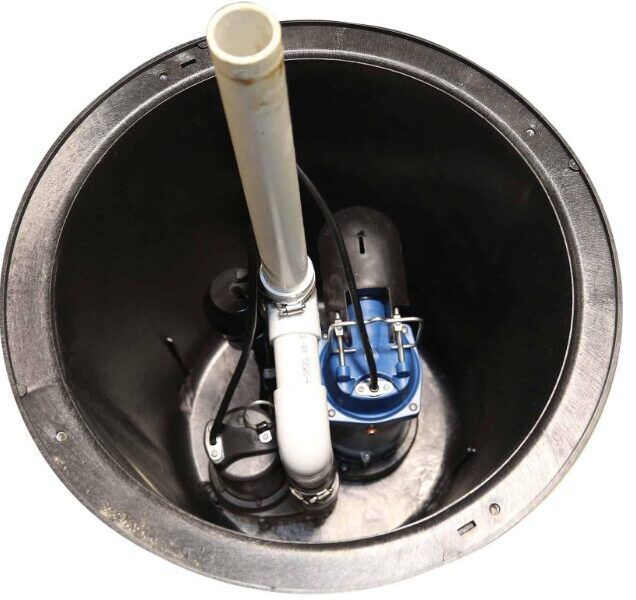Your Sump Pump Isn’t Optional. It’s Your Basement’s Bodyguard

Your basement is supposed to be a bonus, extra storage, a cozy hangout, maybe even a full suite. But without a working sump pump, it can turn into a swamp overnight.
If you’ve got a finished basement, a utility space, or just a place to store holiday decorations, your sump pump is your first line of defence against serious water damage.
Think of it like this: the sump pump is the bouncer guarding your basement, and professional plumbers in calgary are the ones who train it, maintain it, and make sure it’s always ready to throw out unwanted water before it can crash the party.
If you’ve ever wondered whether your sump pump really matters, or if that little pit in the corner of your basement is even working, this article is your wake-up call.
What Is A Sump Pump And Why Do You Need One?
A sump pump is a small, powerful pump installed at the lowest point in your basement or crawl space. Its job is simple: collect and pump out excess water before it can rise and flood your home.
Here’s why that matters
- Calgary and the surrounding areas are no strangers to heavy rain or snowmelt
- Low-lying basements are prone to flooding even during moderate weather
- Groundwater can seep into your foundation if not redirected
- Insurance rarely covers water damage if you didn’t maintain your sump pump
In short, if your basement has ever felt damp, smelled musty, or shown signs of water damage, you probably need a sump pump installation.
How A Sump Pump Works
Here’s the basic rundown:
- Water flows into a sump pit, either from drainage systems or natural groundwater
- When the water reaches a certain level, the pump is triggered automatically
- It redirects the water through pipes away from your home’s foundation
That’s it. Quiet, behind-the-scenes, and absolutely critical.
Signs Your Sump Pump Is On Strike
Just because the pump is installed doesn’t mean it’s doing its job. Here are signs your sump pump might be ready to retire:
- You hear strange noises (grinding, rattling, or humming that sounds off)
- The pump is running constantly, even when it’s dry outside
- Water is pooling around the sump pit
- It fails to activate during storms or heavy snowmelt
- It’s over 7 years old and hasn’t been serviced
If you’re noticing any of these red flags, it’s time to consider sump pump repair or replacement.
What Happens Without A Working Sump Pump
Let’s paint a picture. It’s spring. The snow is melting fast. You go downstairs, and your basement carpet squishes under your feet. There’s a weird smell, furniture is soaked, and boxes of memories are turning into papier mache.
Now you’re dealing with
- Thousands of dollars in flood damage
- Mould and mildew that spreads fast
- A basement that smells musty for months
- Possible structural damage to your foundation
And if your insurance decides it’s not covered because of neglect? That’s a hard lesson learned.
Types Of Sump Pumps And Which One You Need
There are two main types of sump pumps:
1. Submersible Sump Pumps
- Installed directly in the sump pit
- Quieter and better for finished basements
- More powerful but slightly more expensive
2. Pedestal Sump Pumps
- The motor is located above the pit
- Easier to maintain but louder
- Good for utility rooms or crawlspaces
Bonus tip: If you live in an area prone to power outages during storms, you’ll want a , too. Because what’s the point of a flood pump that fails the moment the power goes out?
How Often Should You Maintain Your Sump Pump?
A sump pump isn’t something you install and forget. Regular maintenance is key to keeping it ready for action. Here’s a simple schedule to follow:
- Every 3–4 months: Check for debris in the pit and test the float switch
- Twice a year: Clean the pump, check discharge lines, and inspect for rust
- Annually: Have a licensed plumber do a full inspection and test cycle
Doing this means your pump will be ready when it matters most, during heavy rain, melting snow, or surprise plumbing leaks.
Sump Pump Installation Tips For Calgary Homes
If your home doesn’t already have a sump pump, here’s what you need to know before installation:
- Pick the lowest spot in the basement for the sump pit
- Make sure there’s a reliable power source nearby
- Ensure the discharge pipe sends water at least 10 feet away from your foundation
- Install a check valve to prevent water from flowing back into the pit
- Consider adding a high-water alarm for extra peace of mind
Installation isn’t a casual DIY project. It requires digging into your concrete floor, wiring, plumbing, and proper grading. Trust a pro to get it done right.
Why A Working Sump Pump Adds Home Value
Homebuyers today are smarter. They ask questions about waterproofing, foundation integrity, and flood protection. A home with a properly installed, working sump pump:
- Gives buyers confidence in the basement space
- Can increase your home’s resale value
- Reduces your risk of costly post-sale issues or disputes
If you’re planning to sell or renovate, a working sump pump is a selling point, not an expense.
Conclusion: Protect Your Basement Before It Turns Into A Bathtub
You wouldn’t leave your front door wide open during a rainstorm. So why leave your basement unprotected?
Whether it’s water from outside or a plumbing failure from within, a sump pump protects your foundation, your belongings, and your peace of mind. If yours hasn’t been checked lately, or you don’t have one at all, now is the time to act.
Because by the time you hear dripping, it might already be too late.





